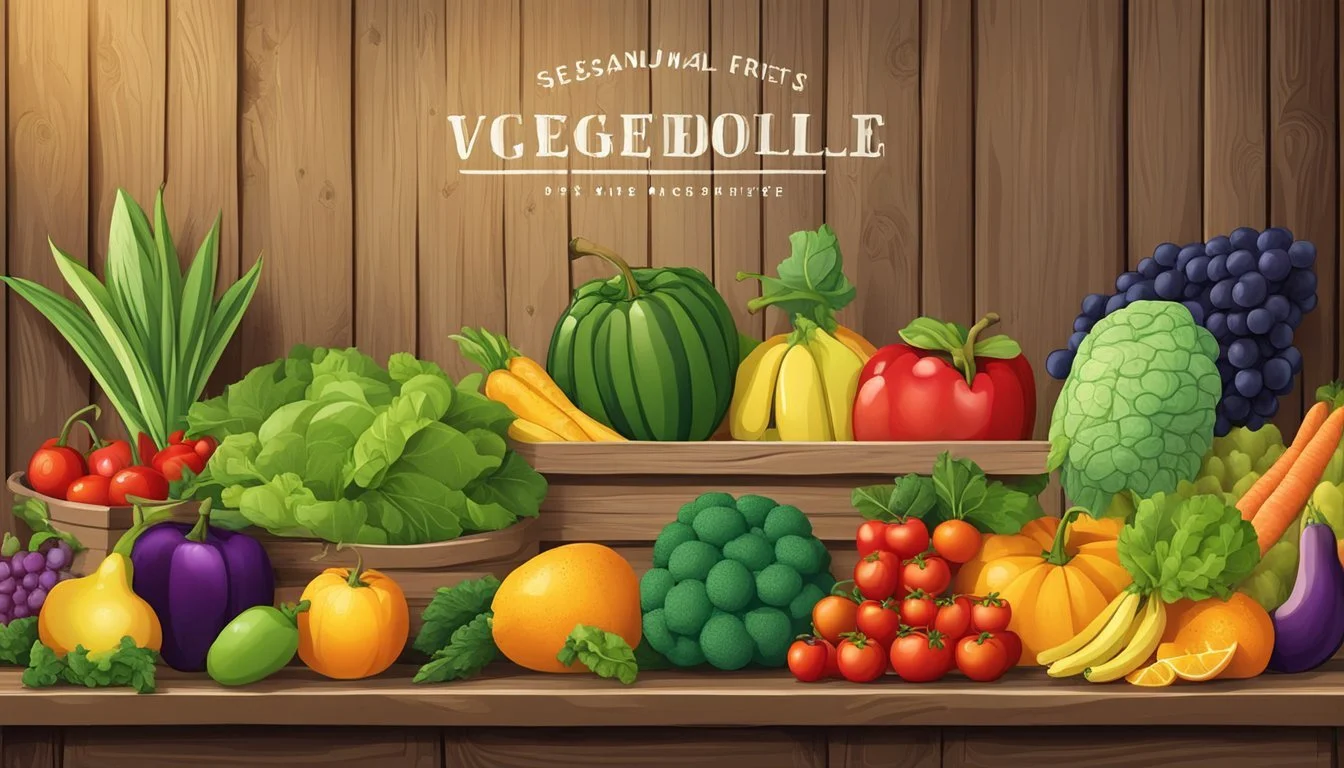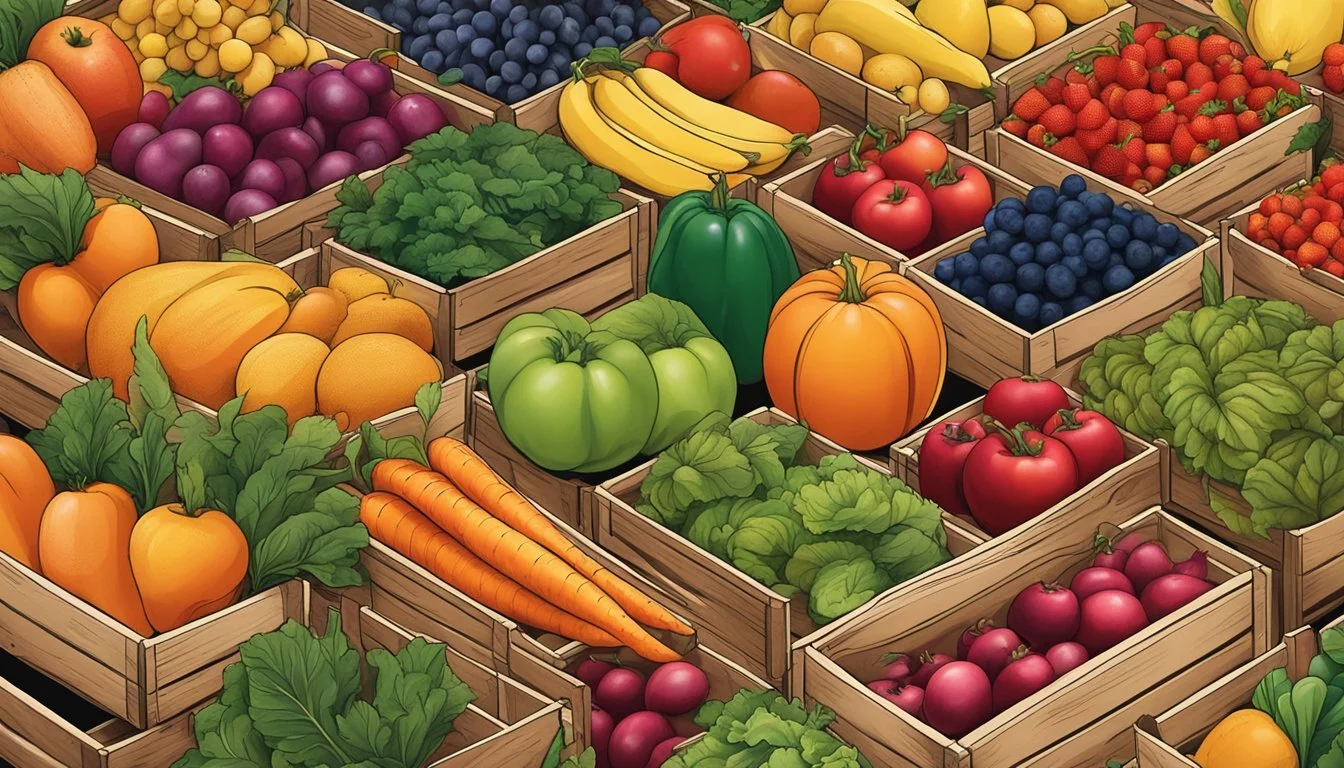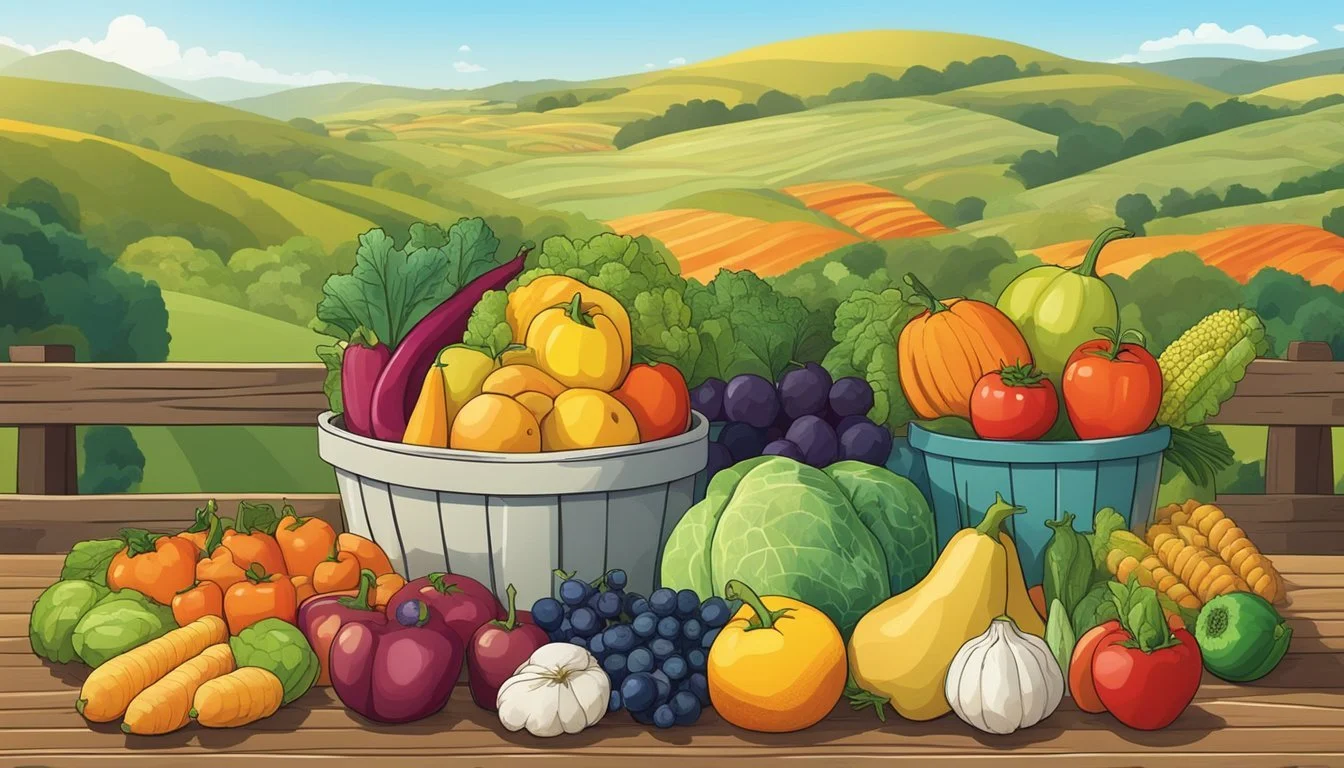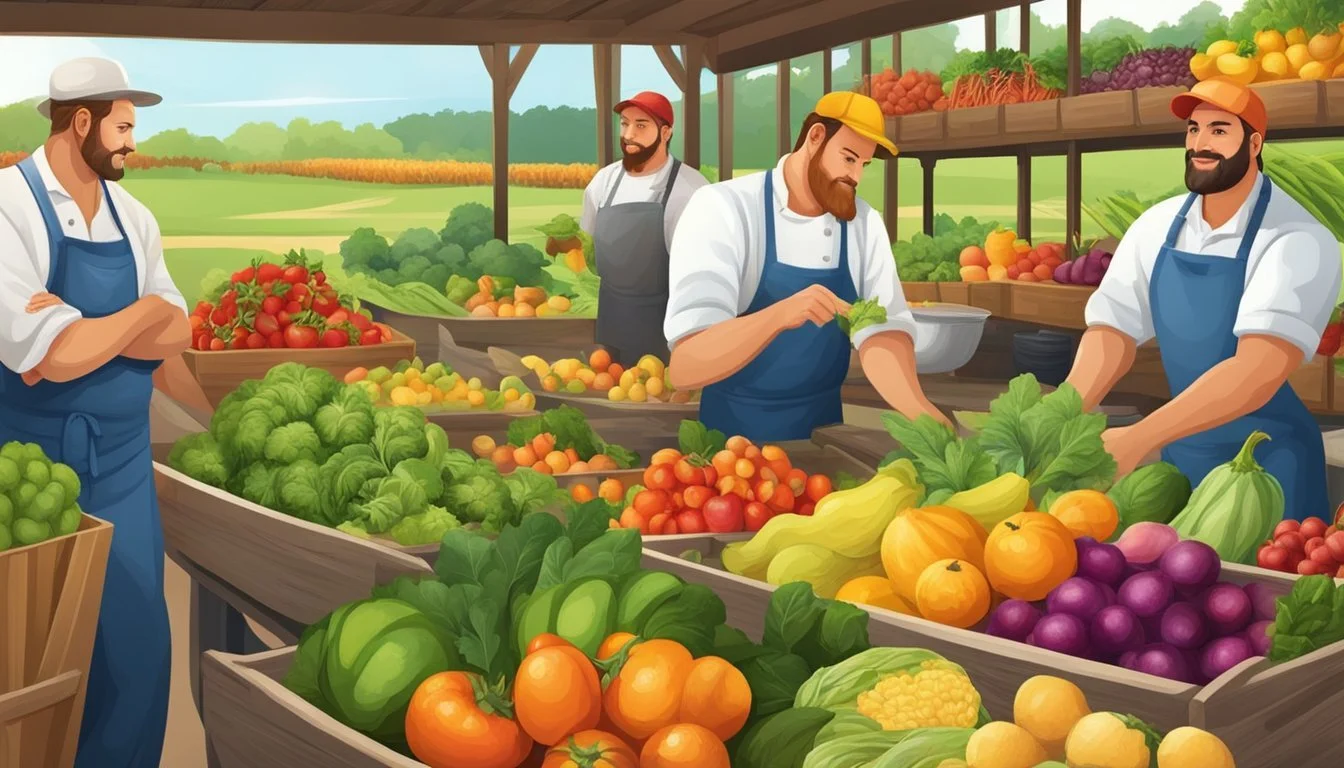Massachusetts Seasonal Fruit & Veg Guide
Your Year-Round Fresh Produce Planner
Massachusetts boasts a rich tapestry of farms and local markets that bring the concept of farm-to-table to life throughout the state. With each season, the region's climate yields an array of fresh produce, allowing consumers to experience the true taste of local farming. This guide serves as a roadmap for residents and visitors alike to navigate the seasonal availability of fruits and vegetables across the state's many farm stands.
The importance of consuming locally-sourced vegetables and fruits goes beyond mere freshness; it supports Massachusetts's economy, reduces transportation emissions, and promotes a sustainable food system. As the seasons change, so too does the bounty offered by local farms. From spring's first harvest of tender greens to autumn's hearty squash, each month presents an opportunity to enjoy diverse flavors that are both nutritious and environmentally conscious.
Understanding the natural growing cycle in Massachusetts is key to making the most of its farm-to-table offerings. The state's seasonal produce calendar not only informs consumers about what's currently at its peak but also encourages a deeper connection with the food on their plates. This guide highlights the best times to find specific fruits and vegetables, ensuring that every meal is as fresh and flavorful as the land it comes from.
What’s in Season in Massachusetts Right Now?
Spring Harvest
As spring ushers in warmer weather, Massachusetts farms come alive, offering a variety of fresh produce. This season is known for its vibrant greens and the beginning of a fruitful harvest period that provides fresh flavors to local tables.
April Delights
In April, farmers' markets in Massachusetts start to see the first signs of spring produce. Asparagus spears are among the earliest vegetables to be harvested, providing a crisp, nutritious addition to spring meals. Fiddleheads, the curled fronds of young ferns, make their brief appearance, often foraged and prized for their unique flavor and texture. For those with an appreciation for wild greens, nettles begin to appear and are harvested wearing gloves to avoid their sting but are enjoyed for their health benefits once cooked.
Herbs start to flourish, with parsley, thyme, and oregano offering fresh aromatic accents for a variety of dishes.
Morels and other early mushrooms may also be found, marking the return of foraging season for enthusiasts.
May Bounty
By May, the variety of produce expands significantly. Rhubarb stands out with its tartness, ideal for pies and desserts. Lettuce and spinach provide the base for fresh, green salads, while green onions/scallions add a punch of flavor. Beets start to make an appearance, offering earthy notes and vibrant colors to the palette of available vegetables.
Farmers begin to harvest a wider range of herbs, further enhancing the culinary possibilities for cooks and chefs alike.
The forest floor continues to yield treasures like additional morel mushrooms, highly sought after by gourmet food lovers for their rich, nutty flavor.
This time of the year, the spring harvest in Massachusetts is in full swing, showcasing a robust selection of fresh, local produce that highlights the changing season.
Starting Summer
The transition from spring to summer in Massachusetts shifts the produce selection significantly. Consumers can expect a variety of fruits and vegetables bursting with flavor thanks to the warming temperatures.
June Offerings
In June, strawberries reach their peak, offering sweet and juicy flavors that are ideal for both fresh eating and preserves. The pea family introduces tender pea greens and fresh peas which are perfect for light salads or side dishes. Leafy greens like arugula (how long does arugula last?), kale, and chard are still abundant, while fava beans (how long do fava beans last?) make a short but flavorful appearance, often sought after by chefs for their buttery texture and nutritional value.
Fruits: Strawberries
Vegetables:
Pea Greens
Peas
Arugula
Kale
Chard
Fava Beans
July Harvest
July marks the height of summer with a harvest that celebrates both sweetness and diversity. Blueberries start to come into season, ripe for picking and perfect for everything from pies to smoothies. One shouldn't overlook the cherries (how long do cherries last?), a delightful stone fruit that is both sweet and tart. In the vegetable department, the greens of June make way for the heartier tastes of summer, yet the aforementioned greens can still be enjoyed in early July.
Fruits:
Blueberries
Cherries
Cherries and blueberries stand out in the summer sun, while leafy greens persist at farmers markets and are joined by mid-summer favorites delivering a full spectrum of flavors and nutrients to the summer plate.
Peak Season
The months of August and September offer a bountiful harvest in Massachusetts, featuring a variety of fruits and vegetables at their prime ripeness. Consumers looking for the freshest produce will find this period perfect for farm to table dining.
August Abundance
During the height of summer, August's warmth brings an array of fruits and vegetables to perfect maturity. Tables overflow with tomatoes, known for their juicy, rich flavor, and peppers in a spectrum from sweet to spicy. Squash varieties, both summer and winter, begin to hit their stride, while sweet corn reaches its sweetest.
Melons: August is an excellent time for watermelon and cantaloupes (how long does cantaloupe last?), which are at their most flavorful and hydrating.
Stone Fruits: Juicy selections like nectarines and peaches are ripe for the picking.
Berries: Savor the last of the raspberries, as they round off their peak season.
September Selections
As the season transitions, September offers its unique harvest. Eggplants boast a glossy exterior and are perfect for a variety of dishes.
Beans: Fresh, tender beans are ready to be picked.
Cucumbers: (how long do cucumbers last?) Crisp and refreshing, cucumbers are still available during the early days of September.
The range of produce available offers chefs and home cooks alike the opportunity to create vibrant and nutritious meals straight from the fields of Massachusetts.
Autumn Offerings
As the leaves in Massachusetts take on fiery hues, the harvest shifts to a rich array of autumnal produce. Local farms offer a bounty that includes the last of summer's yield and the first of the heartier fall vegetables, making the season ideal for farm-to-table enthusiasts.
October Variety
October's harvest in Massachusetts is diverse, with pumpkins taking a spotlight in festive displays and culinary creations. Farms teem with a variety of apples, perfect for pies, ciders, or eating fresh. The list below highlights the key produce one can expect:
Apples: Different varieties such as McIntosh and Cortland are ripe for picking.
Cranberries: Harvested in bogs, they are a signature crop of the region.
Squash (Summer): Includes zucchini and yellow squash, reaching the end of their season.
Peppers (Sweet): Still available in October, adding color and flavor to dishes.
Brussels Sprouts (how long do brussels sprouts last?): Begin to peak, offering a nutty, earthy flavor to meals.
Cauliflower: Its versatility is well-suited for autumn recipes.
Leeks: Bring a mild, onion-like taste to a variety of dishes.
November Gatherings
By November, the focus is on root vegetables that store well and provide comfort during colder days. Farms harvest and sell produce that takes well to roasting, mashing, and stewing. The following are some of the fresh, hearty options available:
Pumpkins: Often associated with October, they remain available into November.
Rutabaga: Known for its sweet-savory flavor, ideal for mashes.
Turnips and Parsnips: Root vegetables that add heartiness to stews and roasts.
Radishes: Offer a crisp, peppery note to salads and side dishes.
Squash: Winter varieties like butternut and acorn squash come into season.
Cranberries: Continue to be available, perfect for cranberry sauce and other holiday dishes.
Brussels Sprouts and Cauliflower: Remain staples at the farmers' markets.
Farmers' markets and local groceries in Massachusetts are abundant with these selections, providing support for a sustainable, seasonal diet that celebrates the region's agricultural heritage.
Crop Availability Patterns
In Massachusetts, the mosaic of crop availability is defined by the region's distinct growing seasons, with cool-weather crops thriving in the state's typical climate.
Cool-Weather Crops
Cool-weather crops in Massachusetts find their optimal growing conditions in the spring and fall. These crops are resilient against frost and can be planted even before the last frost date of the season. Key examples include:
Arugula
Kale
Chard
Broccoli
They typically reach harvest before the warmer summer months or may be planted later to harvest in the cooler weather of fall.
Seasonal Considerations
The growing season in Massachusetts is subject to variability based on several factors including rain levels, early or late frost, and pest activity. During the growing season, farmers monitor these conditions closely to optimize crop yield.
In season crops reflect the current climatic conditions and their natural growth patterns. For example:
Summer months tend to favor crops like tomatoes and peppers.
Fall months see an increase in root vegetables such as carrots and beets.
Understanding the interplay between climate factors and crop availability can assist consumers and restaurants in making informed choices about using the freshest local produce.
Preparing and Preserving
Massachusetts's diverse range of fruits and vegetables necessitates a variety of methods for preservation to ensure produce can be enjoyed year-round. Proper preparation and preserving techniques are critical for maintaining freshness, flavor, and nutritional value.
Fresh Utilization
For fruits and vegetables currently in season, fresh utilization is the most direct way to enjoy their flavors. Recipes that use these items in their prime can greatly enhance dining experiences, ensuring that consumers take full advantage of peak freshness. It's especially valuable to incorporate fresh produce into meals immediately after harvesting, as this is when they retain most of their vitamins and minerals.
Leafy Greens: Incorporate into salads or sauté lightly.
Root Vegetables: Ideal for roasting or boiling.
Berries: Perfect for fresh desserts or as toppings for cereals and yogurts.
Storage and Recipes
Effective storage extends the life of fruits and vegetables, while creative recipes can transform even the simplest produce into a memorable dish. There are several methods to preserve the harvest:
Canning: A process suitable for a variety of produce including tomatoes and berries.
Fruits: Peaches, pears, and apples can be canned in syrups.
Vegetables: Pickling cucumbers, beets, and beans are ideal for canning.
Freezing: Almost all produce can be frozen, albeit blanching vegetables beforehand is recommended.
Fruit: Slice and freeze on a tray before storing to prevent clumping.
Vegetables: Blanch, cool, and freeze quickly to retain texture and color.
Pickling: Not just for cucumbers, but also for carrots, peppers, and even some fruits like peaches.
Recipes that make use of preserved goods can be both traditional and innovative, allowing for a taste of Massachusetts produce outside of the usual growing season. Storage guidelines ensure minimal loss of taste and nutritional content:
Apples: Store in a cool, humid place and use them for pies or sauces.
Root vegetables: Keep in a dark, dry location for soups and stews.
Leafy Greens: Can be blanched and frozen for later use in cooked dishes.
By adhering to these preserving methods, one maximizes the potential of fresh Massachusetts produce throughout the changing seasons.
Massachusetts Farmers Markets
Massachusetts farmers markets are a vibrant aspect of local community life where individuals have access to fresh, locally-grown produce throughout various times of the year. Farmers markets facilitate a direct connection between consumers and farmers, promoting a sustainable farm-to-table culture.
Local Market Guide
Farmers markets in Massachusetts operate under state law, which allows farmers to sell produce raised by them or their family without a hawkers' or peddlers' license. Mass Farmers Markets, a non-profit organization, collaborates with these farmers to strengthen community vitality and enhance local farm viability. They provide essential support for numerous markets across the state. One can find a comprehensive list of locations and times for farmers' markets at the Massachusetts Department of Agricultural Resources' website or through local tourism boards.
Seasonal Shopping Tips
Shopping seasonally ensures that one purchases the freshest produce while supporting local agriculture. Here are some tips for shopping at Massachusetts farmers markets:
Plan Ahead: Be aware of what is in season. A Produce Availability Calendar can help with this, showcasing which fruits and vegetables are typically available each month. For instance, in the warmth of summer, shoppers can find tomatoes, corn, and berries, while autumn might bring varieties of squash and root vegetables.
Ask Questions: Farmers are typically eager to share information about their products. Inquire about where and how they grow their crops to learn more about local farming practices.
Flexibility: Crop availability can vary based on factors like weather. Shoppers should remain flexible and willing to try new items that are in season.
A quick reference of what one might expect in season could look like this:
Month Produce Examples Spring (Apr-May) Asparagus, lettuce, peas Summer (Jun-Aug) Tomatoes, corn, green beans, berries Fall (Sep-Oct) Squash, pumpkins, apples Winter (Nov-Mar) Root vegetables, hardy greens
By following these guidelines and knowing the typical seasonal cycles, shoppers can make the most of local farmers' offerings throughout the year.









